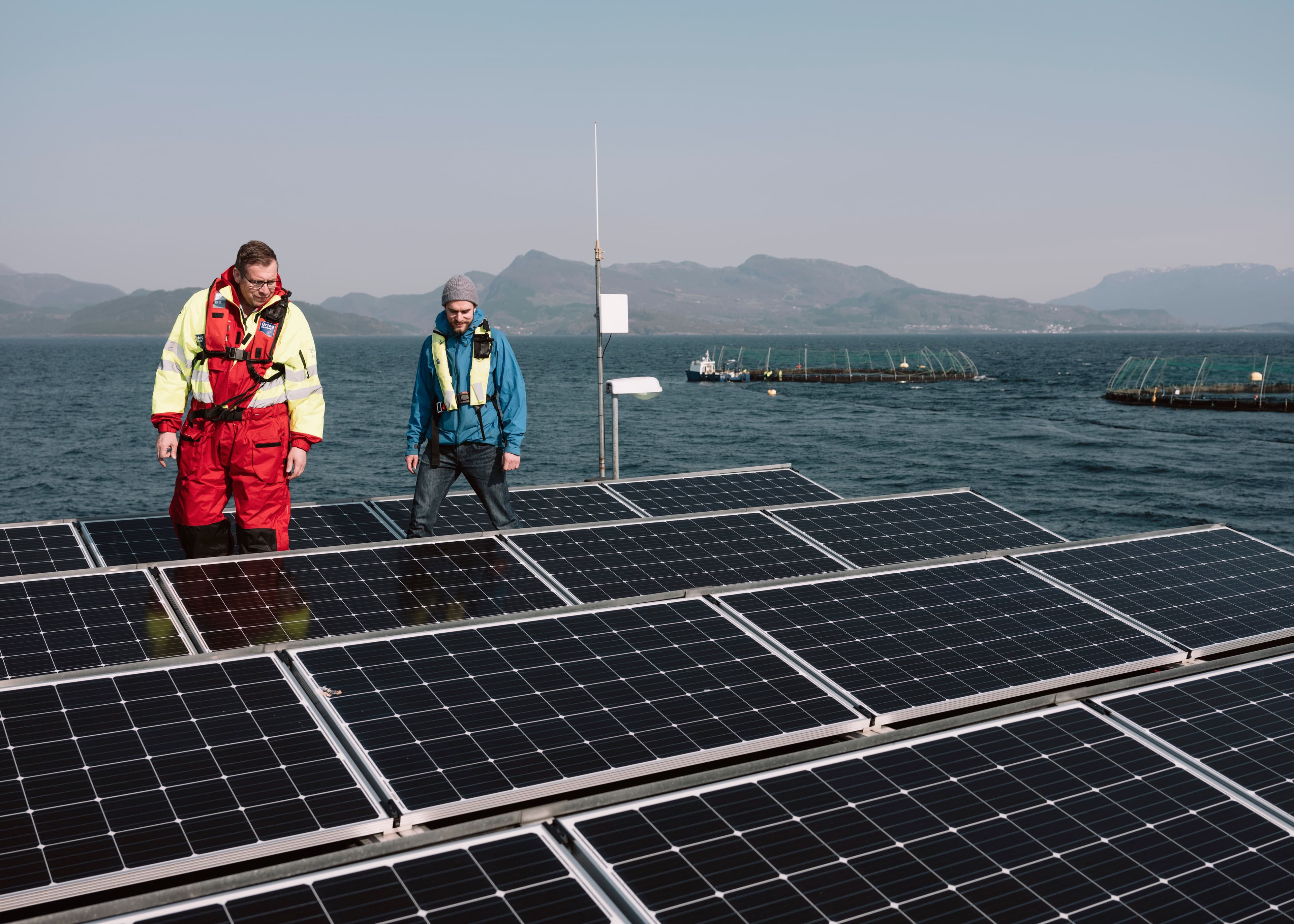
Direct carbon emissions from our production (Scope 1 & 2) account for 8% or 31 000 tCO2e of our total emissions. 92% or 382 000 tCO2e, of our emissions originate from our value chain (Scope 3), particularly those aspects linked to fish feed and the transportation of salmon to our markets.
Climate Action Plan
During 2022, we have developed a comprehensive climate action plan outlining the necessary measures and investments to achieve our climate targets. This plan emphasizes the importance of operational changes affecting Scope 1 & 2 emissions, as well as supply chain adjustments in Scope 3. Our goals include reducing operational fossil fuel consumption, transitioning to renewable electricity, and implementing supplier requirements to lower our absolute emission levels. We are also investing in site and boat electrification, promoting novel feed ingredients with lower emissions, and reducing transportation-related emissions.
In 2023, we continued to implement and monitor the projects outlined in the plan, making any necessary adjustments based on our progress. We have also enhanced our governance of emission reduction initiatives through internal ESG training, improved documentation, and increased regional involvement to ensure the effectiveness of our efforts. Given the reliance on innovation and development for our projects, we recognize the need for flexibility in our climate plan, particularly due to technical risks impacting cost estimates and emission reduction potential. Collaborating with suppliers and customers has allowed us to improve data quality and reporting, while increased stakeholder attention to carbon emissions has further supported our initiatives.
In our farming regions Rogaland and Finnmark, we have continued investing in sea site electrification to eliminate fossil fuel usage. Diesel-electric batteries have been acquired in all regions, significantly reducing fuel consumption and improving feeding operations at sea sites. In British Columbia, we have replaced barge feeding compressors with high efficient flowpressors, reducing our energy and fuel consumption drastically. In Rogaland, our focus on post-smolt practices has led to carbon reduction by minimizing the need for sea lice control treatments. We anticipate similar benefits in other regions as smolt sizes increase.
While Newfoundland's emissions notably increased in 2023 due to operational expansion following successful harvesting, our climate action plan anticipates continued emissions growth in this region in the coming years. However, we plan to offset these increases with enhanced reductions in other farming regions, as outlined in our strategy.
Climate performance
In 2023, our total greenhouse gas (GHG) emissions increased by 9%, or close to 34 000 tCO2e, compared to 2022. The increase is mainly attributable to a increase in our emission factors from feed in Scope 3, operational expansion and harvest in Newfoundland, and purchase and distribution of a larger volume of external fish compared to previous years. Feed emissions increased by 13%, or close to 30 500 tCO2e compared to the year before, which contributed significantly to an increase in Scope 3 emissions. Despite the substantial increase in the Newfoundland region following successful harvesting, we have experienced reduction in our other operating regions. This has constrained the overall rise in our total emissions for 2023. It should be noted that according to our climate action plan, we expect emissions in Newfoundland to keep increasing in the subsequent years as production volume increases.
Towards the 2030 target
In 2023, we have a total reduction in Scope 1, 2 and 3 of 6% from our 2020 baseline year, which shows that we are moving towards a reduction in 2030. With our new target of 42% reduction, we need to continue our efforts in reducing our climate emissions.
Although there has been a significant increase in emissions from our operations in Newfoundland, attributed to expansion efforts, we have successfully reduced emissions in other regions. This progress ensures that we remain aligned with our objectives. The increase in emissions from Newfoundland was anticipated and has been factored into our climate action plan.
As salmon farming has low levels of carbon emissions from production, the vast majority of our emissions are linked to our value chain (Scope 3). Feed and freight cause the largest impacts and will be the focus going forward. As for all companies, it is challenging to assess our scope 3 emissions, due to complexities in our supply chain and lack of standardized reporting systems. We are continuously working on improving our reporting.